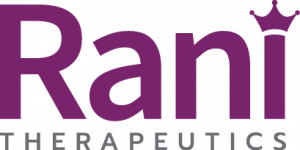Companies
Founded
Exits
Patent
Applications (Filed)
We are a multi-disciplinary life sciences lab focused on developing and commercializing
breakthrough innovations. We seek to understand the biggest challenges in healthcare
and develop innovative and effective treatment solutions that have the potential to
improve the lives of millions of patients.

Oral Biologics Delivery vs. Making Oral Biologics a Reality

The concept for Rani was developed by Mir Imran, a prolific medical inventor and entrepreneur who has founded more than twenty life sciences companies.
Rani was established as a company in 2012 after several years as a research project within InCube Labs, Mir’s multi-disciplinary life sciences lab focused on developing and commercializing breakthrough innovations.
The Rani platform is capable of delivering a wide range of biologics for the treatment of various chronic diseases.
View Company
Treatment of overactive bladder with sacral nerve stimulation

SacraMed is a medical technology company focused on the development of a neuromodulation system for the treatment of Overactive bladder (OAB). OAB is a bladder disorder that results in an abnormal urge to urinate, with or without urinary incontinence.
It can occur at any age, but is most common in the elderly population. Approximately 1 in 6 adults suffers from OAB. It is a treatable condition, and at SacraMed we are working on advancing the tools and techniques to help bring relief to patients.

Breakthrough Therapy for Iron Deficiency Anemia

Fe3 is an early stage company developing a novel transdermal therapy for the treatment of iron deficiency anemia. The approach and technology for Fe3 was developed at InCube Labs, a multi-disciplinary life sciences R&D lab focused on developing breakthrough medical innovations.
25 million people in the US alone have mild to moderate anemia, making it one of the most prevalent micro-nutrient deficiencies.

Medical Therapy to
Treat Epilepsy

Neurolink is an early stage company developing a novel therapy for the treatment of epilepsy.
Nearly three million Americans suffer from epilepsy, a neurological condition characterized by seizures. One of the most common neurological diseases, epilepsy affects approximately 1% of the population - 1 in 26 people will have epilepsy in their lifetime.

Implantable drug-device combination therapy for brain cancer

Theracle is developing an implantable drug-device combination therapy for gliomas.
The approach uses an implantable drug-delivery device, bypassing the blood-brain barrier. The device will provide an ability to focus treatment directly at the cancer site using one or more drugs, and it is expected that treatment will result in no peripheral adverse effects. It is planned to pursue an FDA orphan drug designation, with fast-track status towards regulatory approval.
View CompanyInCube has a broad and deep network of resources in a variety of disciplines including clinical, regulatory, reimbursement, manufacturing, and quality as well as investors and corporate, academic and government partners. We also have close collaborations with InCube Ventures, VentureHealth and Modulus which provide funding and manufacturing support to our portfolio companies.
View NetworkOur innovation process is centered on the identification and framing of a clinical problem that is worthy of a new solution. Throughout the years, we have addressed a number of clinical needs with implantable devices, drug delivery combinations, interventional devices and the use of novel biomaterials. Throughout our innovation process, we develop robust intellectual property.
Our objective is to create new therapies that will have a significant and positive impact on patients. This starts with identifying the most important problems in healthcare, those with few or inadequate current solutions.
Our work requires a background in all disciplines relevant to the problem we are trying to solve. As we frame the problem, we spend considerable time understanding the scientific basis of the problem, and the clinical implementation of a potential solution.
Once we understand and research the problem and the market, we are ready to develop potential solutions. The solutions that are most commercially viable move from a research project to become one of our portfolio companies.
As we develop products, we form companies and put together the resources needed for product development, clinical trials, regulatory approval and commercialization. Getting our innovations to patients is our most important goal.
Overactive bladder affects millions of patients and is a growing problem with our aging population. In addition, neurogenic bladder can lead to a number of urinary conditions in people who lack bladder control due to brain, spinal cord or nerve problems. These conditions are debilitating and can dramatically affect a person’s quality of life. Our team is developing novel solutions for the treatment of urological conditions including implantable neuromodulation devices.
Inflammatory bowel disease (IBD) is a group of inflammatory conditions – including Crohn’s disease and ulcerative colitis – that affect the colon and small intestine. These diseases affect more than 1 in 500 Americans. Symptoms include abdominal pain, diarrhea, hematochezia, and weight loss, in addition to other associated problems such as iron deficiency anemia. We have several innovations in the area of gastroenterology from oral delivery of biologics to site specific drug delivery and intestinal sensors for detecting inflammation.
We are focused on a number of innovations for women’s health, including a novel solution for the treatment of iron deficiency anemia. 25 million people in the US alone have mild to moderate anemia, making it one of the most prevalent micro-nutrient deficiencies. These people, mainly women, suffer from a variety of undesirable consequences including fatigue, poor cognition and motor function.
Central nervous system (CNS) disorders is the leading therapeutic category of the US pharma market. Examples include migraine, depression, Huntington’s disease, Alzheimer’s and Parkinson’s. Given the magnitude of the problem and the vast number of patients affected by CNS disorders, we are looking for new ways to improve treatments across various CNS diseases, including a novel implantable device to treat epilepsy. We’re applying technology and innovative methods to transform how patients are treated, with the goal of better care and quality of life for CNS patients.
Our team has conducted research into the musculoskeletal system, and the conditions affecting bones, joints, muscles, tendons, ligaments, cartilage and nerves. We are focused on developing novel new approaching for bone healing including the creation of biomaterials.
Metabolic diseases result from a disruption in the body’s homeostatic mechanisms regulating the energy balance – the process of getting or using energy from food intake. More than 100 million people in the US alone suffer two of the most prevalent diseases, diabetes and obesity. Treatments vary depending on the type of metabolic disease. We are currently focused on developing new approaches for addressing both diabetes and obesity.
Cancer is the second leading cause of death in the US behind only heart disease. The disease is enormously taxing on our healthcare system, and while there are a variety of treatment options available, few are curative. Our work is focused on identifying new breakthrough approaches for treating the disease. Because each cancer is unique and there are variants even within the same subtype, we are exploring implantable devices and personalized medicine to dramatically improve the quality of care for cancer patients.
Mir Imran is recognized as one of the leading inventors and entrepreneurs in the healthcare field. Mir has created two dozen companies, many of which have successfully exited through acquisition or IPO. He now holds more than 600 issued or pending US patents and many of his innovations have become standards of care.
MORE ON MIR